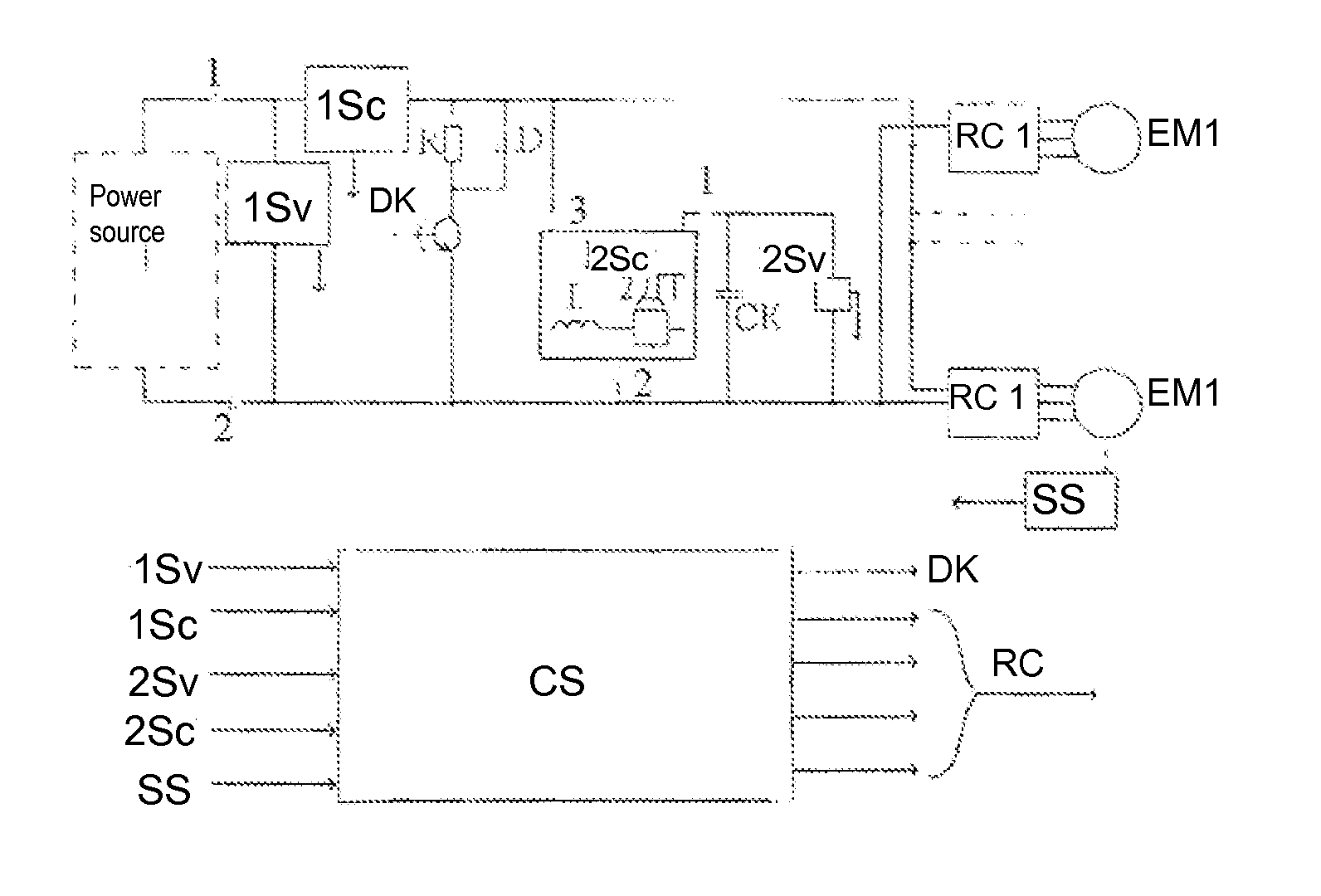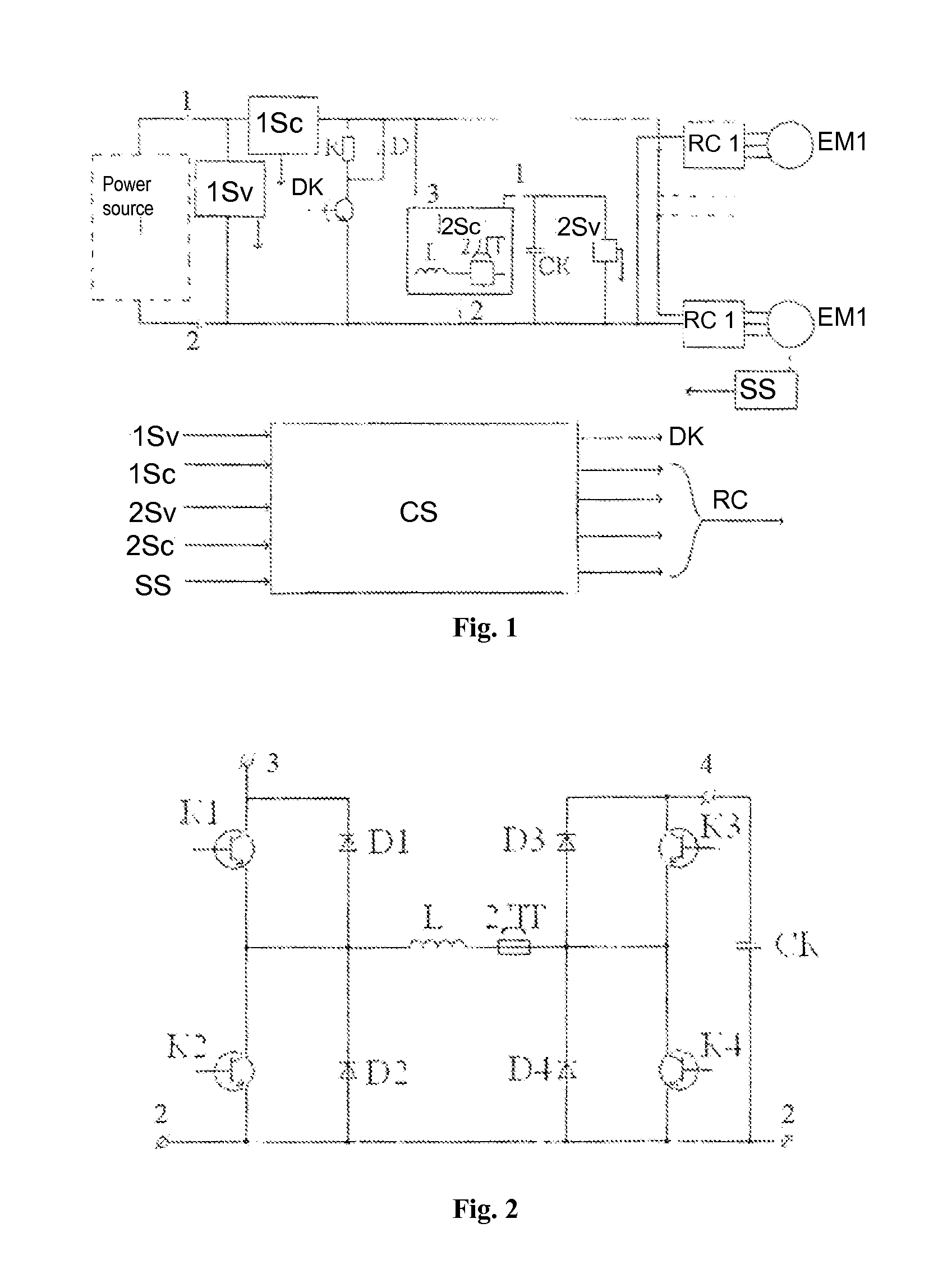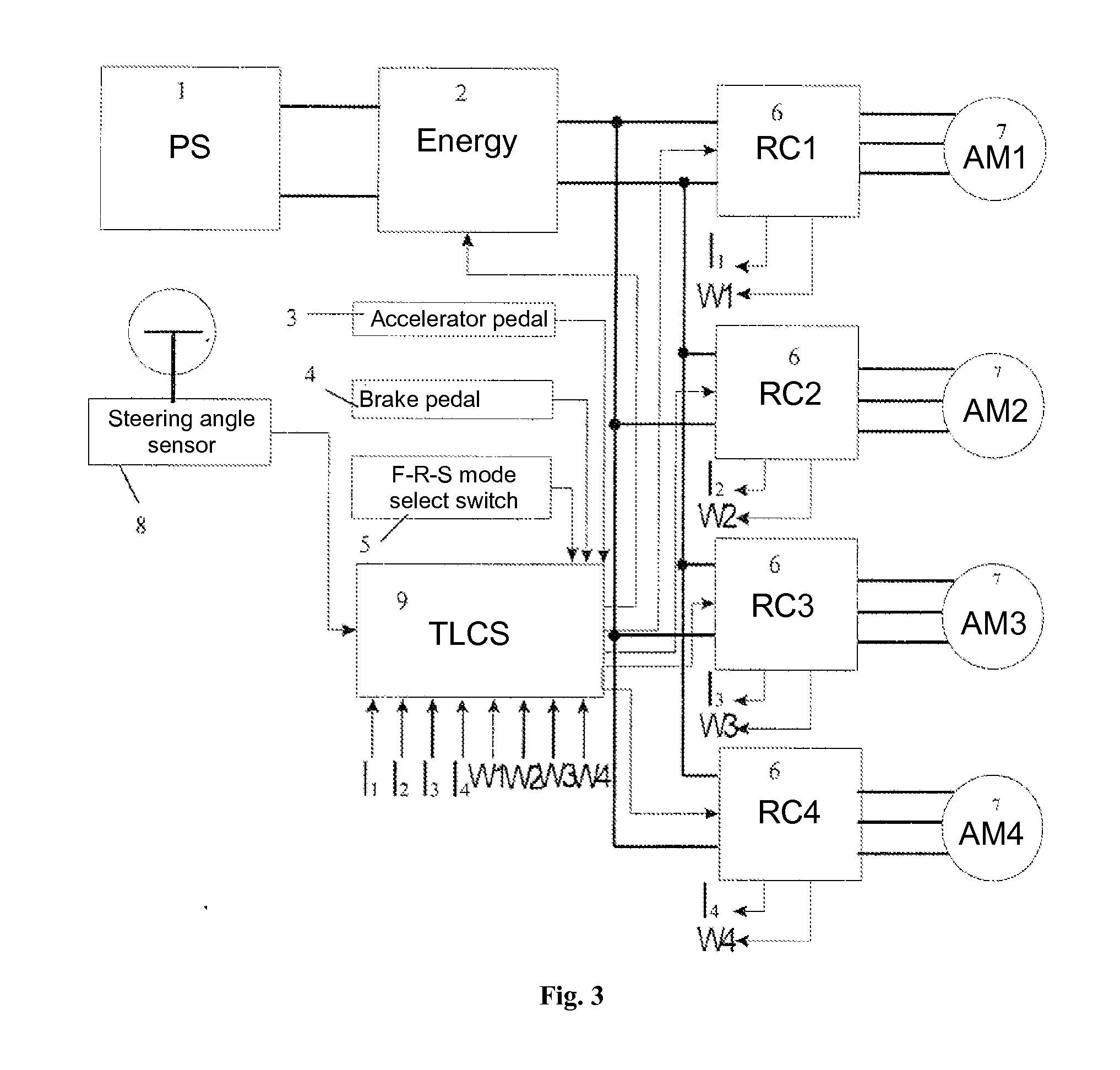Electric vehicle
- Summary
- Abstract
- Description
- Claims
- Application Information
AI Technical Summary
Benefits of technology
Problems solved by technology
Method used
Image
Examples
Embodiment Construction
[0034]FIG. 1 shows a schematic circuit of the proposed EV comprising a self-contained (on-board) or coupled with an external reversible power source with terminals 1 and 2 at which the voltage is measured by a voltage sensor, and the current is measured by a current sensor.
[0035]Terminals 1 and 2 are used to connect in series a ballast resistor R (parallel-connected to a bypass diode (D)), a discharge key (DK) and reversible converters (RC1 to RCi) providing for regulation of aped and / or torque of electric motors (EM1 to EMi) coupled to the EV wheels via a mechanical transmission or without a transmission (motor-wheels) (not shown in the schematic).
[0036]The schematic also represents a supercapacitor (SC) which voltage is measured by sensor 2Sv. SC is connected to the output terminals of the reversible converter (RC) 4 and 2 the output terminals 3 and 2 of which are connected to terminals 1 and 2 of power source 1.
[0037]FIG. 2 illustrates an embodiment of a reversible converter (RC)...
PUM
 Login to View More
Login to View More Abstract
Description
Claims
Application Information
 Login to View More
Login to View More - R&D
- Intellectual Property
- Life Sciences
- Materials
- Tech Scout
- Unparalleled Data Quality
- Higher Quality Content
- 60% Fewer Hallucinations
Browse by: Latest US Patents, China's latest patents, Technical Efficacy Thesaurus, Application Domain, Technology Topic, Popular Technical Reports.
© 2025 PatSnap. All rights reserved.Legal|Privacy policy|Modern Slavery Act Transparency Statement|Sitemap|About US| Contact US: help@patsnap.com



